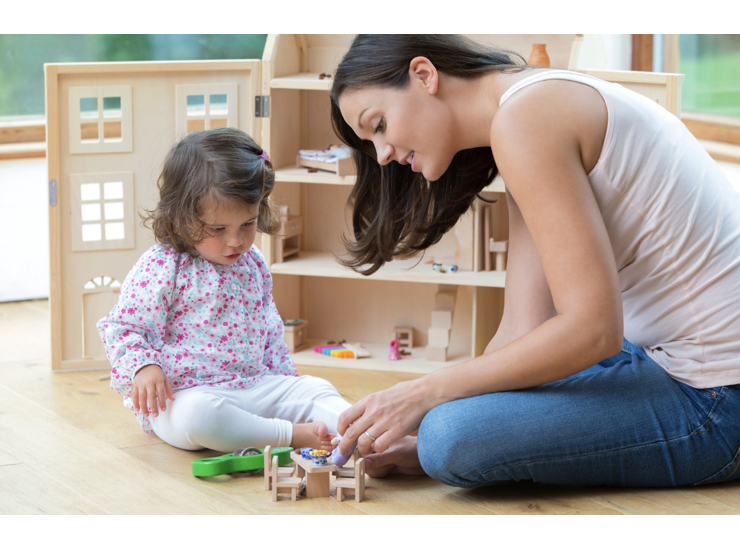
Mother: What does the doggie say?
Child: Doggie say woof.
Mother: What does he eat?
Child: He eat biscuits.
Mother: And what about the pussycat? Does she like biscuits?
Child: No. She like cat food.
Have you ever considered how many questions we ask our children? Does it go there? Where does Grandma live? What noise does the cow make? Shall Mummy help you? The list, as any parent knows, is endless. I mean, look at the interaction above; the whole conversation consists of a parent asking their child questions. In fact, you might (or might not) be surprised to hear that over half of the things we say to young children are questions. And, of course, questions are useful tools to teach our little ones about communication and language, as well as helping to broaden their thinking processes, but what you might not know is that they might also be teaching our children something else – mistakes.
Now, you might be wondering what mistakes can be learned from questions so let’s take another look at the interaction above. While you probably got the gist of what was going on here and what the child was saying, you might have missed the subtle mistakes that the child was making and how they were related to the questions she was being asked. The child said, “Doggie SAY woof” instead of “Doggie SAYS woof”, “He EAT biscuits” instead of “He EATS biscuits” and “She LIKE cat food” instead of “She LIKES cat food”. In all these cases, the child used the wrong verb form. Mistakes like these are very common in young children’s speech (so don’t worry if your little one makes them too), but what the child said also mirrored the word combinations in her mother’s questions.
Actually, researchers used to think that these mistakes were not caused by questions at all. They thought that children were just making speech production mistakes, by dropping the “s” ending from verbs. So, when children said things like “Doggie SAY woof” instead of “Doggie SAYS woof” or “She LIKE cat food” instead of “She LIKES cat food”, it was thought that this was because children were not good enough at putting words together to add the “s”. More recently, however, researchers have realised that these mistakes may very well be caused by questions after all. But how does that even work? We are not making mistakes when we ask our children questions, are we? Of course not! Researchers now think that children might be learning these mistakes from questions because they are learning sequences that include verbs without an “s”. If you think about it, when we ask our children, “What does the doggie say?” or “Does she like to eat biscuits?”, they are hearing sequences like “Doggie say” and “She like” being used all the time. Children are then taking these sequences and using them in what they do not realise is the wrong context, leading to exactly this kind of mistake.
Recently, Julian Pine, Colin Bannard and I looked at thousands of examples of children’s utterances to see whether they really are learning these mistakes from questions and guess what? They are! We found that there was a link between the frequency of sequences like “Doggie say” and “She like” in questions and similar mistakes in children’s speech. This study has been accepted for publication in Language Learning and you can find out more about it here. We also did a second study just to make sure we could find this link another time round. But in this study, as well as finding the link, we also found that children only stopped making these mistakes when they learned that sequences like these are only allowed in certain contexts like questions. This study has been accepted for publication in Developmental Science, but it is not out yet. Here is a preprint – the final version is coming soon!
So, what does this mean for language development?
The finding that children’s mistakes can be related to the speech that they hear highlights the importance of being mindful of the language that we use around them. Of course, we should not stop asking children questions; after all, they are a vital tool for engaging their little minds, but perhaps we should also make more of an effort to show our children other uses of these sequences in different contexts. Did you know that short simple sentences such as “He likes biscuits” are rare in parent-toddler conversations? In fact, they make up less than 3% of what we say to our children. So, it is not surprising that children use verbs without the “s” because they hear them without the “s” so much more. The implication is that, as parents, we should think about using more simple sentences with our toddlers so they can learn about when to use (and not use) different forms of the verb. But how can we do this?
Well, one way is by using something called ‘Toy Talk’. Toy talk is a language strategy that involves talking descriptively about your child’s toy’s locations, properties, and actions. You match what you are talking about to what your child is interested in, which not only makes it more fun for them, but also increases the number of simple sentences they hear. For example, you could say things like “The horse JUMPS over the fence” when your child is playing with their farm set, or “The truck GOES vroom” when your child is pushing their truck around the living room. By increasing the use of simple sentences (and still asking those all-important questions!), you will help your child to learn about when to use each form of the verb and to stop making these mistakes!

